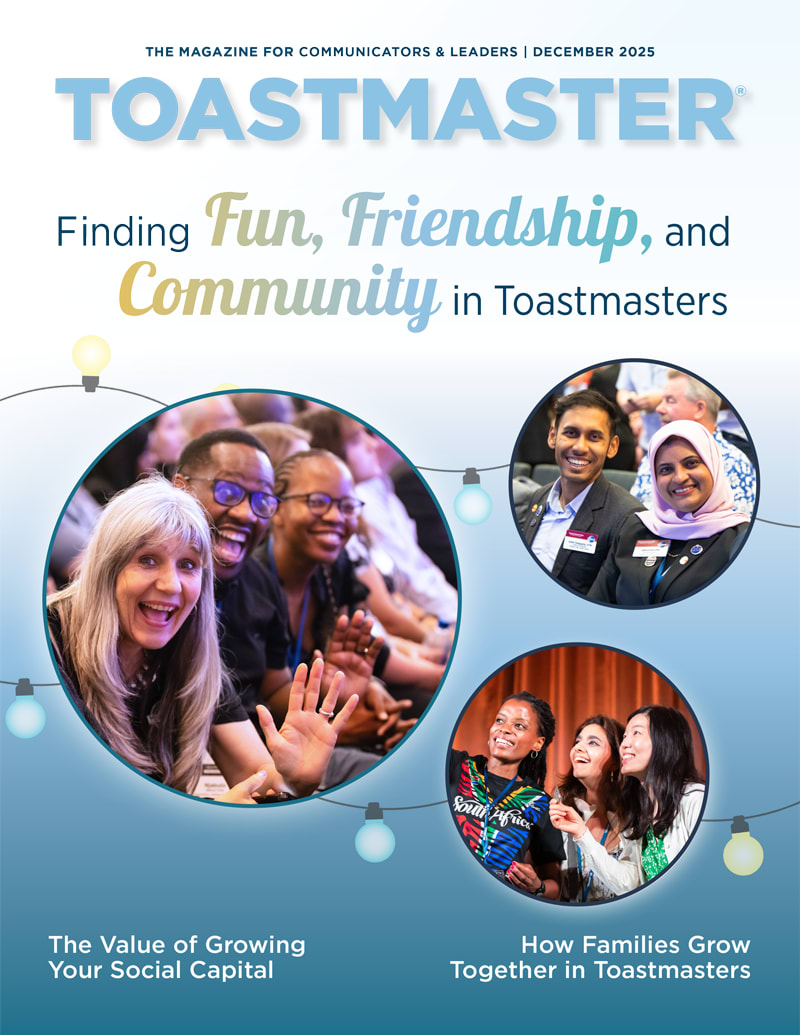
What does the term “dynamic speaking” really mean? There’s more to it than you might think.
In the most simplistic form, a dynamic speaker is someone whose vocal quality captivates an audience and makes a presentation shine. If vocal variety is the icing, then vocal foundation is the cake. Together, they embody dynamic speaking. As a vocal coach of over 20 years, I always ensure that my clients set up a proper vocal foundation (cake) before adding variety (icing).
Whether you receive tough feedback, do a self-evaluation, or are merely curious about dynamic speaking, it is important to note that nothing is wrong with your voice. There are only habits to break.
Get started building your vocal foundation with the following tips and techniques:
Breath and Posture
Our voice is nothing without breath—quite literally. And oftentimes most vocal issues can be resolved by addressing our breathing. Plus, harnessing the breath will bring musicality to your speech and afford you more resonance/power.
Try this:
Inhale low and slow (360-degree expansion of the ribcage), exhale smoothly and consistently through to each sentence end (belly should contract the entire time you speak). If the exhale feels sticky or sputtery, try holding an “oooh” sound for five counts and notice how your belly contracts.
Pro tip:
Inhaling through the nose is preferred as it brings in filtered air and doesn’t dehydrate. And posture matters—you can’t get a good breath if you’re slumped down on your ribcage. Remember to keep your body loose and fluid.Emotional Intensity
Often when we connect to our breath, and then to the meaning behind what we say, the delivery sorts itself out in a natural, authentic, and dynamic way.
Emotional intensity can be summed up in two words: intention and vulnerability. What is the intention or motivation behind what you’re saying? Are you trying to impress your audience, or are you simply sharing or telling a story? (We want the latter.)
Next, are you connected to your topic? Do you feel safe enough to access and express your emotions or does it feel forced, put on, or awkward? It all comes down to vulnerability—the idea of uncertainty, risk, and emotional exposure as a form of courage. When you’re connected to your topic, and you feel safe being vulnerable about it, the emotions come naturally. Take a stance that it’s not about you, it’s about the message. This often better regulates breath, and amps up confidence, too.
Try this:
Transition from thinking about the story to feeling the story in your body. Instead of thinking “I want to convey anger in this part,” try to access anger in your body, notice how it feels, and allow the feeling to guide the lines. Turn on a voice recorder to capture the magic.
Pro tip:
Bring vulnerability to your presentation.Volume
This is the Goldilocks of voice—either we have too much, or not enough, or we can’t seem to get it “just right.” Establish your base resonance and then mix it up. Softer speech encourages an audience to lean in and listen. Louder speech emulates excitement or passion. Your base “narrative” volume will help distinguish between and bridge the loud and soft moments.
Try this:
To find your base volume, aim your voice at the roof of your mouth, under your nose. This visualization will help you access your internal resonance chambers (head, chest, mouth, face). You’ll know you’re “there” when you feel a buzz and/or the sound gets louder.
Pro tip:
Think like a singer. Where can you be bolder (louder) in your speech? Softer? Look for the excited or angry moments and add volume and pull back for vulnerable moments. Connect to your topic and you’ll know what to do.In this Toastmasters Podcast episode, vocal coach Jillian Mitchell shares tips for unblocking your voice to improve its quality and even guides the co-hosts through a fun vocal exercise.
Pitch
Pitch refers to the notes you speak in. Likely you speak low-mid in your vocal range; think of this as your base voice. Are you also using mid-range and high notes? Questions often demand higher pitches, whereas points of reflection often demand lower pitches. When you’re delivering your speech, practice varying the pitches. And remember, adopting a vocal warm-up will afford you more variety with your voice.
Often when we connect to our breath, and then to the meaning behind what we say, the delivery sorts itself out in a natural, authentic, and dynamic way.
Try this:
Celebrity vocal coach Roger Love recommends the stair-step method. Start at your vocal base and walk up a few stairs of pitch (or notes) to the sentence end, and over the next sentence, walk back down the stairs.
Pro tip:
Try out some character voices—they add to the story! Plus, we already do it naturally in our daily conversations. To illustrate the power of character voices, think back to childhood bedtime stories. Just refrain from adopting a persona or “stage voice” for the entire performance; your conversational voice (i.e., how you would tell the story to your friend) is just fine.Tempo
When we’re nervous, we rush. Keep yourself on track by focusing on the words you are saying—are they clear? Can people understand you? Are you mumbling or fumbling? Take a breath. The space between your message is just as important as the message itself; it allows the meaning to sink in. Connect to the meaning or intention behind the words and let that guide you. Pause often. Again, don’t be afraid to vary your speed. Excited? Speed up. Reflective? Slow down.
Try this:
If you find yourself rushing, speak to the tempo of your heartbeat.
Pro tip:
Remember to enunciate, naturally not forcefully. Think: tip of the tongue, the teeth, the lips—not only a great tongue twister but essential for communication. (Fumbling is a key sign that you need to slow down.)Gestures and Movement
Your body is your instrument. Ensure it’s working for you, and not against you.
In the words of body language expert Louise Hahler, Ph.D., “Whilst most think words drive what we say, it’s actually our body that has the greatest influence.” Awkward or forced poses, gestures, or expressions can undermine your message. To keep things natural, embody your message and act as it comes naturally. Bonus: Moving your body helps to calm nerves.
Try this:
Start in the middle of the stage, and stay there for the presentation’s introduction. Then walk to one side of the stage and pause for a story, walk to the other side of the stage and pause for another story, and then walk back to the middle. Repeat. You’ll want to spend the majority of your presentation in the middle of the stage and end there, too. Use your face and arms for emphasis. Move your arms from your elbows, not your shoulders; it appears more natural. Again, embody your message and this will come naturally.
Pro tip:
Opt for an expanded definition of voice. Imagine your voice fills your entire body, not just throat and mouth, from the top of your head to the tips of your toes. Seriously, it works! And it’s a great volume booster, too.
Dynamic speaking comes down to connection—of your breath and to your emotions. Once you have this foundation set, often the dynamism takes care of itself. So have your cake and your icing–and sure, eat it, too.
Jillian Mitchell is a vocal coach, recording artist, podcast host, writer, and all-around voice advocate. She is the founder of Voxsana, an online platform dedicated to voice empowerment, and most recently has joined the 2024 TEDxRRU speaker coach team in her hometown. Jillian lives in Victoria, British Columbia, Canada, with her husband and two children.
Related Articles

Leadership
The Power of Influence

Communication
Tone It Up!

Communication
Why Vocal Variety Is So Valuable

Stage Presence



 Previous
Previous

 Previous Article
Previous Article